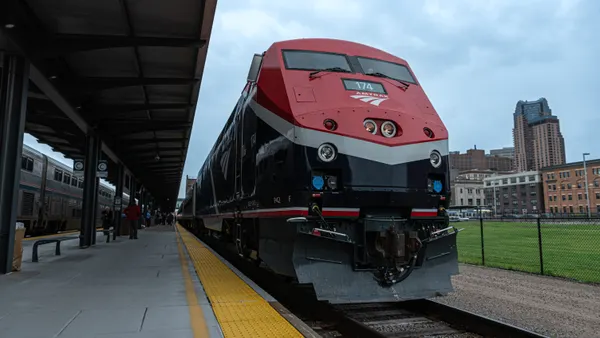Dive Brief:
- The San Francisco Municipal Transportation Authority (MTA) approved last week a citywide expansion of its demand-based parking price program, according to NextCity and others. San Francisco is now the first U.S. city to implement a surge pricing program at all of its meters, parking garages and city-owned lots.
- Demand-based pricing had already been rolled out at 7,000 of the city's metered parking spaces, as well as 14 city-managed parking garages. Now, by expanding the program to the rest of the city-owned parking spots, leaders hope to decrease traffic congestion from drivers circling the streets for parking, and to also increase the parking turnover on popular streets.
- The metered pricing currently has a minimum of 50 cents per hour, with a cap of $8 per hour. Under the program, the city will adjust meter rates every three months based on average occupancy. According to NextCity, if a block is consistently at 80% or more occupancy, the rate will go up 25 cents. Alternatively if it is below 60% occupancy, the price will drop 25 cents.
Dive Insight:
As city populations grow, ride-sharing becomes more widely used and e-commerce deliveries increase, the concept of curb management is one that cities are highly prioritizing. San Francisco Mayor Ed Lee recently announced dedicated pick-up and drop-off zones for Uber and Lyft services, and this renewed focus on demand-based parking prices is just another way the city is controlling the curb.
Surge or congestion pricing is a common tactic for cities to implement in order to control traffic flow and force alternate behavior from drivers. Recently, New York Gov. Andrew Cuomo resurrected the idea of congestion pricing in New York City due to a faulty subway system and an uptick in drivers. Virginia also recently imposed an extreme toll price — which peaked at $40 — on solo drivers using I-66 express lanes to enter downtown Washington, DC during rush hour in order to promote carpooling and decrease traffic.
Demand-based pricing on a parking level is slightly different. It encourages drivers who would usually park in a high-demand spot to consider less popular parking for a cheaper price. Yet, while the surge pricing across San Francisco could reduce congestion, drivers are not likely to change behaviors unless the know how much the metered pricing in specific areas is on-demand. Developing some sort of app could increase the efficiency of the citywide program by helping to direct drivers to preferred parking spots before they begin their search for parking.
Moving forward, curb management in San Francisco and elsewhere will eventually become less about drivers and more about services. As ride-share and microtransit trends grow in popularity, personal car ownership will likely deplete, and the need for controlled parking prices — or much parking at all — will dissipate.












